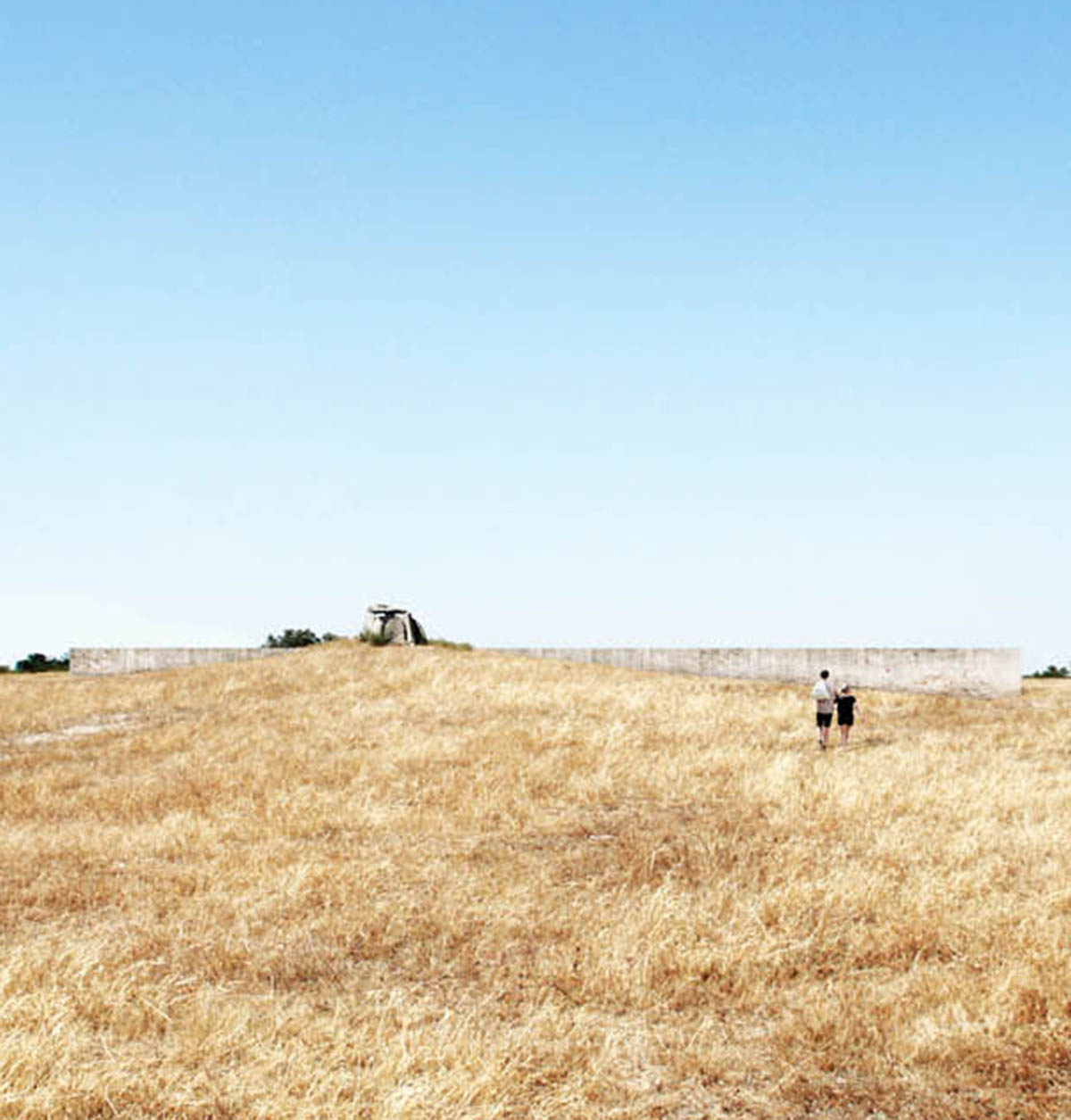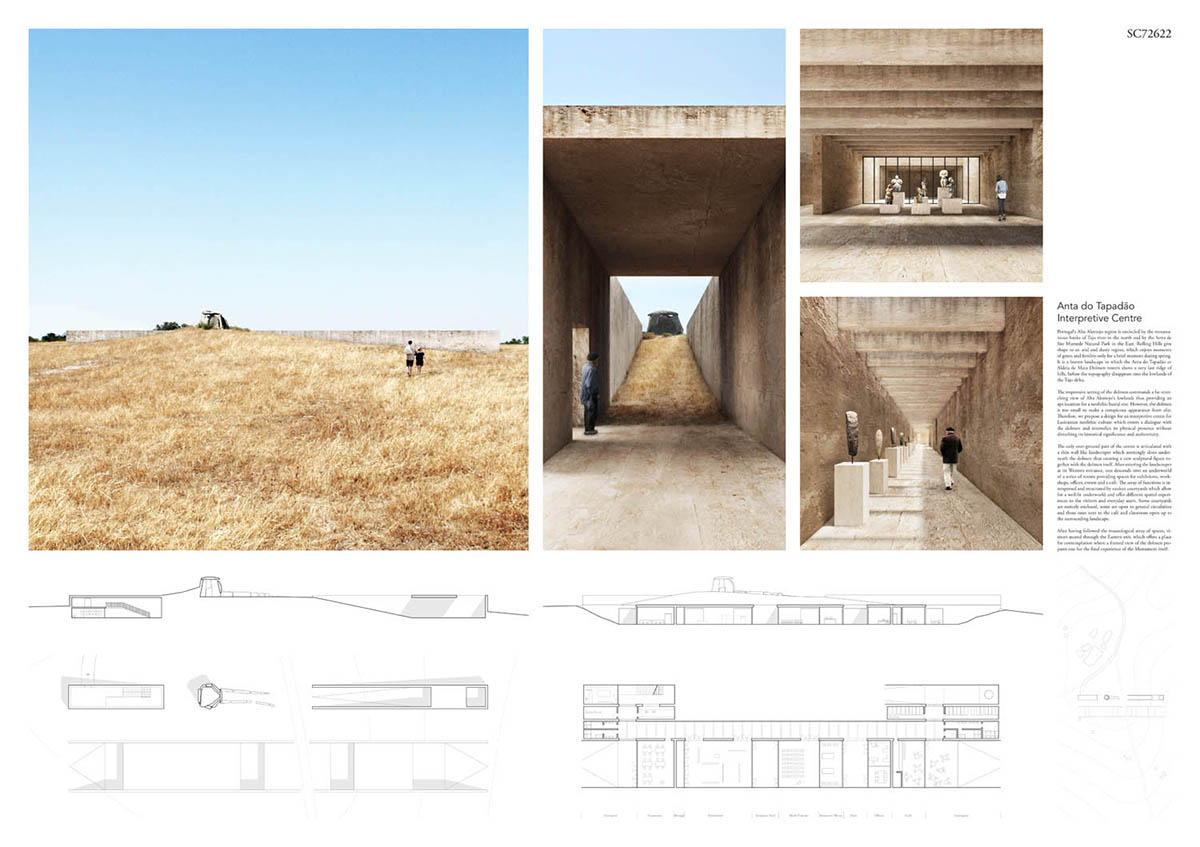Submitted by WA Contents
ARKxSITE announces Site Cloister ‘Aldeia da Mata’ Dolmen, Portugal competition winners
Portugal Architecture News - Jan 30, 2020 - 15:09 10696 views

ARKxSITE has announced winners for the Site Cloister ‘Aldeia da Mata’ Dolmen, Portugal competition. This international one-stage architecture ideas competition invited all architecture students, young architects and young professionals with a degree in architecture studies (≤ 40 years old) to develop and submit compelling ideas for the design of a Site Cloister located near the ‘Aldeia da Mata’ dolmen, in Crato, Alentejo, Portugal.
The ‘Aldeia da Mata’ dolmen is a landmark of great cultural heritage and historical significance with characteristics that must be fully preserved.
When generating a vision for an intervention located within such a spectacular place, it is essential that each design proposal emphasises, respects and celebrates the megalithic monument, while providing visitors with a unique experience.
The Site Cloister aimed to create a museological path to enhance the historical significance and contemplative nature of the ‘Aldeia da Mata’ dolmen. It is an intimate and secluded place between the natural landscape and the ‘inner courtyard’ where the megalithic monument becomes a powerful scenery. A sequence of spaces, above and / or below ground, welcome visitors and provide shade while stimulating movement between open-air and / or enclosed spaces and outdoor environments.
The jury comprised of Kim Bridgland + Aaron Roberts (Australia) - Edition Office, Ignacio Urquiza Seoane (Mexico) - Ignacio Urquiza Arquitectos Louis, Leger + Laurent Didier + Mathieu Le Ny (France) - BAST.
See the winning projects with jury’s remarks below:

Image clourteys of the artists
1st Prize: Felix Martin and Tim Scheuer from Germany
Jury’s remarks:
"This proposal demonstrates a subtle but powerful gesture over the site. It doesn’t compete with the dolmen; it allows the visitors to choose between following the new path or visiting the dolmen as it has always been. The representation is simple and congruent, showing a sensitive understanding on the use of materials for the contemporary presence of the building. The project allows the primacy of the existing ‘Tapadão’ dolmen to be the dominant feature on the site while sensitively guiding visitors to an intimate experience with the megalithic monument. A rigorous plan, carefully chosen material palette and purposefully simple detail create a highly considered atmospheric experience."
"The project being underground, the intervention becomes furtive to the benefit of the megalith. There is a contradiction between being furtive and affecting the site by digging so much."
Congratulations!

Image courtesy of the artist
2nd Prize: Martina De Nunzio from Italy
Jury’s remarks:
"This proposal takes the circular reference of the traditional cloister and creates a fluid experience for the user without enclosing the dolmen; the exploration of the site now is diverse; the new construction is transparent and provides different frames to experience the area, from the structure and from the ground. The raised lightweight structure sensitively maintains the integrity of both the ‘Tapadão’ dolmen and the surrounding landscape, while framing the megalithic monument with a clear geometric plan. Moving through the building, one is always the same distance from the dolmen, it remains the central focus of the experience."
"The systematic structure and the simplicity it gives to the construction detail gives sense to this simple intervention that allows a simple gesture to host all of the program. We perceive a possible reversibility of the intervention on an historical site that may evolve and be cleared again."
Congratulations!

Image courtesy of the artists
3rd Prize: Julien Picard and Julien Desbat from France
Jury’s remarks:
"The mentioned ‘time’ factor, makes this proposal interesting: As long as the time and context affects the proposed building, the permanence of the dolmen will be more tangible, adding the experience of the visitors a renovated interest in the ancient structure. The approach becomes relevant when considering from the concept the temporality of the piece and the statement that will develop in its future. Allowing the existing ‘Tapadão’ dolmen free space, a carefully crafted entry sequence with separated program, lightly frames and contains the megalithic monument, striking a sensitive balance between the architectural intervention and the existing site. An ordered, lightweight rigorous structural system contrasts the dolmen and importantly is subservient to it."
"This project has the pragmatism of an infrastructural intervention that could work even without the elements attached to it. The different typology, almost a collection, is questioning in terms of utility and sense it has towards this project. Congratulations!"
Honorable mentions
SC72661 Pierre-Louis Castro, Florent Roucoules and Mathias Lefebvre (France)
SC72628 Alberto Cruciani, Lorenzo Ciccalè and Fabio Cervelli (Italy)
SC72702 Felix Hahn (Germany)
SC72630 Elena Dalbon (Portugal)
SC72644 Sofía Castiello, Anabel Fiestas and Sofía García (Spain)
SC72707 Álvaro Llera García (Portugal)
SC72714 Miguel Ángel Damián Sanz and Sonia Álvaro Sanjuán (Spain)
SC72704 Hakan Evkaya and Kutlu İnanç Bal (Turkey)
See other architecture competitions on WAC's Competitions page.
> via ARKxSITE
